Blog
Microwave vs Passive Infrared (PIR) motion Sensors: What do we need to know?
A motion sensor is a device used for identifying moving subjects such as humans. It is used to control lighting fixtures as well as the operation of related other connected devices. Sensors work incredibly well in commercial and residential settings to monitor, improve and safeguard surroundings. There are two types of commonly used sensors: Microwave motion sensors and Passive Infrared (PIR) motion sensors.
#I: Microwave Motion Sensors: A microwave motion sensor is an active device. A device that uses low-level pulses of electromagnetic radiation or microwave signals for occupancy or movement detection.
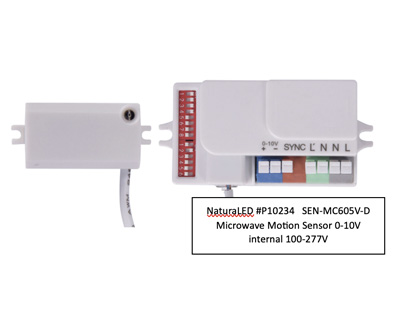
How does it work?
These sensors emit electromagnetic waves with the help of a transmitter that is then reflected to the sensor, known as the echo time. The receiver in the sensor then analyses the waves that are bounced back. Microwave motion sensors work similarly to Radar and Sonar systems due to their capacity and capability to measure its distance from surrounding objects. Unlike the PIR sensors that detect object movements through its field of view, Microwave sensors detect the object’s movement through microwave signals. Microwave sensors can detect motion through glass, plastic, wood, and most other materials except metal. If a human or animal comes into the area of coverage, the microwave signals will be interrupted, thus will set off/trigger the lights/security systems connected to the sensor.
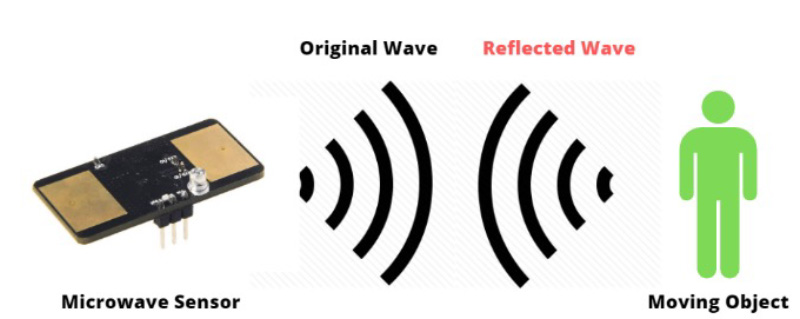
Benefits of Microwave motion sensor:
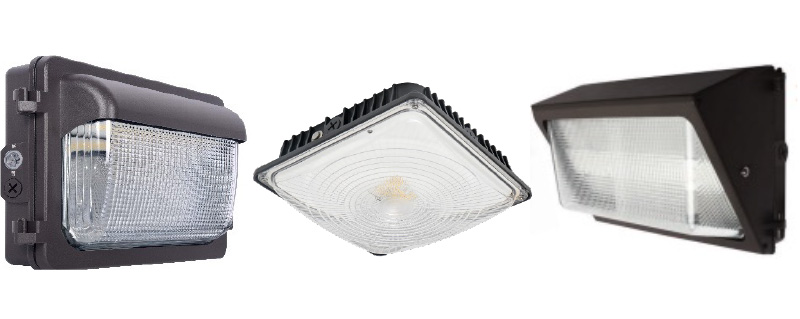
Our NaturaLED fixtures that can work with Microwave motion sensor are our Slim Canopy and Traditional Wall Pack series including the new TWX series.
#II: Passive Infrared (PIR) Motion Sensor:
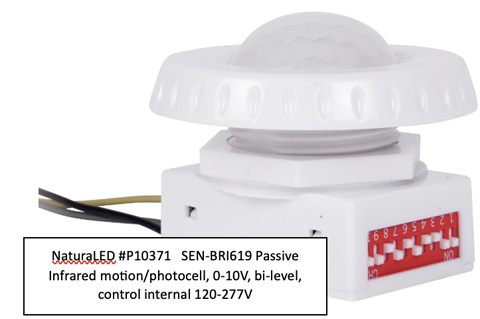 A PIR sensor is a passive device. It detects the movement of an infrared radiation source within its range and field of view. In other words, it is an electronic device capable of measuring infrared light radiated from objects within their line of sight. It is used in motion detectors to sense the movements of people, animals, or other objects. It is widely used in automatically activated lighting systems.
A PIR sensor is a passive device. It detects the movement of an infrared radiation source within its range and field of view. In other words, it is an electronic device capable of measuring infrared light radiated from objects within their line of sight. It is used in motion detectors to sense the movements of people, animals, or other objects. It is widely used in automatically activated lighting systems.
How does it work?
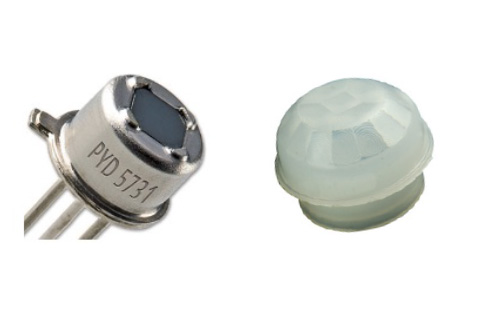
A pyroelectric sensor is the main component of a motion sensor. Humans and animals emit heat energy in the form of infrared radiation. A PIR motion sensor has a pair of pyroelectric sensors to detect heat energy from the surrounding environment. In other words, PIR sensors measure the infrared light emitting from the objects in their field of view.
When there is no one in the covered space range, the pyroelectric sensor does not detect any change in temperature and would remain idle.
But when there is someone or an animal walking by in the sensor covered range, the IR signal detects the object and sends back the signal through the Fresnel lens’ field of view and focuses it onto the PIR sensor. The infrared signal difference between these two pyroelectric sensors thus triggers the light to turn on.
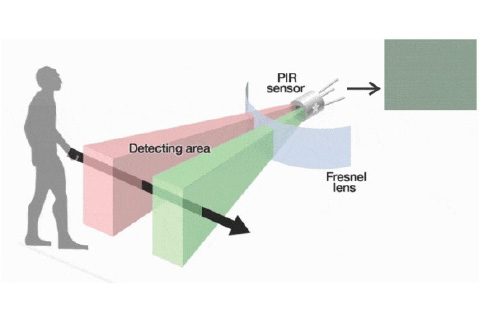
Benefits of PIR motion sensor:
Our NaturaLED fixtures that can work with PIR motion sensors are SAL/CAL series and Linear High Bays
These are the following summary of PIR & Microwave sensors:
| PIR Motion Sensor | Microwave Motion Sensor | |
|---|---|---|
| Sensitivity | Low sensitive to higher background temperatures. Highly sensitive in lower temperatures. | Consistent working in all temperatures |
| Coverage | 90 Degree | 360 Degree |
| Detection | Can be insensitive when walking directly towards the sensor | Can detect through walls |
| Power | 0.8w to 1.0w of electricity | 1.1w to 1.5w of electricity |
| Applications | Smaller and compact premises | Large area security applications |
| Trigger Mode | Infrared reflection | Movement |
